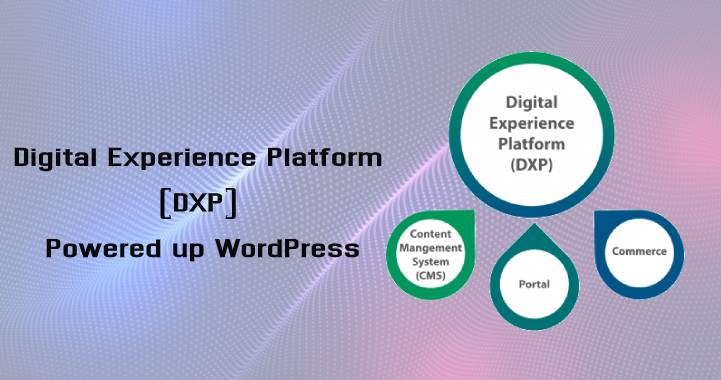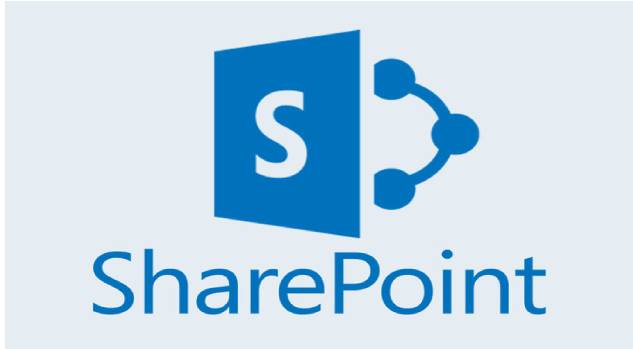Digital Experience Platform
With every passing WordPress has evolved itself from being an ordinary blogging platform to an advanced CMS. It is undoubtedly one of the best content management systems that are used today.
Table of Contents
It is roughly estimated that the platform powers more than thirty percent of the world’s websites. But just as this happens there is a momentous and unique paradigm shift underway. Only a few companies are aware of the leveling up of the capabilities of this platform.
There is a gradual shift that is occurring which will make it a dominant Digital Experience Platform also known as DXP. For clients and developers, this is turning out to be an exciting new opportunity.
This is because they can integrate data & services, analyze results in real-time, consolidate content, automate sales and marketing digitally, and also enhance the customer experience.
When supercharged this can be extremely powerful and most companies still haven’t realized it. It offers a different level of integration which is unheard and unseen by the masses.
Think of anything like social media, customer relations, analytics, marketing, donation, database, purchase, and others. With DXP it gets a unique integration. Hence, it can be considered as the core of the digital efforts.
In this short read, we have included examples featuring solutions in WordPress. These solutions have been possible through the Digital Experience Platform and it gives us a glimpse of the future of web development.

1. Integration of Ticketing system for music venues
The challenge here is to integrate brand-consistent web, social, and operations with two disparate ticketing systems. One of the major and popular live music venues with multiple performance spaces uses two ticketing systems. These systems can be any from the various available throughout the world.
Clients will always want the customer to have a consistent brand experience. But it is also essential to streamline the back-office and marketing operations of the client at the same time. Now, this is a labor-intensive and complex operation.
The best solution to this can be to import data from the two API to WordPress. The next step can be to use the source specific custom tagging to populate the client website. Now when we do this it is essential for both the ticketing systems to have a robust API.
If one of them doesn’t then it needs to be worked out by designing one that is compatible with both. The ticketing data and latest show information can be imported with the help of two custom PHP scripts.
Then it is time for the custom treatment of each ticketing service. That is done by populating the data which is automatically organized and tagged.
The same single canonical source is drawn from digital marketing tools and social posts.
With automated brand consistent treatment everywhere the information and assets can always remain synced. Inefficient processes and repetitive tasks are eliminated from the marketing and operations department.
The major implication drawn is that the Digital Experience Platform can integrate with the web services which are otherwise incompatible. And not only this, but it ensures that across all digital platforms the brand content remains consistent.
2. Supercharging SharePoint for Institutes
The challenge here is to integrate WordPress with complex data from Microsoft SharePoint which is drawn from a single source.
At various institutes across the globe, there are mandates for members to mandatorily use Microsoft SharePoint for specified databases.
Now many times it occurs that the recommended program is not capable of integrating with the respective institute’s website. This gives rise to two disparate systems that are in no way interlinked to each other.
Hence, a separate directory for the specified task and for the pages needs to be maintained for a single generic element. This means that the source of information and directories are more than one which ultimately becomes a burden to maintain. This can come with serious consequences. The listings offline and on the website can be different. In some cases, the individuals compensate for it by creating unique pages.
The solution is to make a custom interactive directory on WordPress for the specified task and connect it with the SharePoint database. The sub-pages can then be populated with the most recent information.
The database of SharePoint was the authorized and official source of correct information. But the institute at many times remains underserved by its proprietary interface.
It is essential to partner with B2B technologies to ensure that one has the data from SharePoint. This partnership should be intended to build custom API which is required for a custom WordPress interface of the institute.
The Digital Experience Platform can integrate a soiled data which is simple to manage and always the same across all platforms for an institute.
3. Enhancement of Daily Menu for fast-casual regional restaurant
The challenge here is to daily update the rotating menu for a franchise that has at least twenty independently owned locations. For an enhanced local SEO, this must also include schema markup.
Menu for a large local food chain changes daily and also varies across its franchise locations which are independently owned. The information was published on the website manually. This was a time consuming and error-prone process but was simplified with various shortcuts.
Now, this leads to poor local SEO and also brand inconsistency. An inaccurate menu was provided by the third-party ordering services and hence the chain performed poorly SERPs as well. Local customers always wanted to explore the daily menu that they served which in most cases was inaccurate.
The best solution for this issue was the migration of data management for Menu into a single platform. Piping data through a WordPress Digital Experience Platform which can generate schema markup and update pages could do the job.
The menu is handled perfectly in a single platform across the website, social network, search engine, and even third-party apps. After a one-time import, it is also possible to have a low-friction method for the chain to update the Menu data daily.
By developing a custom PHP script and programming it accordingly the DXP can automate the best practice for local and global SEO.
4. Streaming the digital backend for clinical trials
The challenge here is for a clinical trial company to backend digital labor with the separate patient-facing and B2B websites.
This clinical trial company has two separate websites. The research patients are recruited from the patient-facing site. It also has a B2B website for the marketing of partners and clients.
The companies also used multiple disconnected services like MailChimp, Salesforce, and others. And for the same, it also ensured that multiple soiled databases were maintained.
A rigorous duplication effort was required by the backend operation team to manage these digital assets. It was a laborious, error-prone, and lengthy journey. But, the integration of both websites along with digital services and databases in one interface could do the job for them.
WordPress is usually thought of as a backend CMS for a single website. But with Digital Experience Platform two new websites can be generated for the company.
The only difference here will be that it will have the same shared data and services. Third-party applications and its data will be synced and the assets will be maintained.
The duplication tasks are drastically reduced through the DXP interface and the backend operations team can work efficiently. With DXP it is possible to share data with more than one website and link them all to shared data and services.
Conclusion
These are just a few examples because it remains just the beginning of this era. Redefining the developers’ technology is the need of the moment.


